
Fabric sunshades from simple to sensational
Traditionally, a canopy is a simple structure that gives shelter. It has several supporting legs with a flat or low-peaked roof on top, typically made of fabric. The term “canopy” is often used interchangeably with “tent.” Technically, the difference is that the sides of canopies are open with a completely closed roof, while tents usually have sides made from the same material. However, lightweight curtains and modular panels on some models make the differences between canopies and other shade structures less clear.
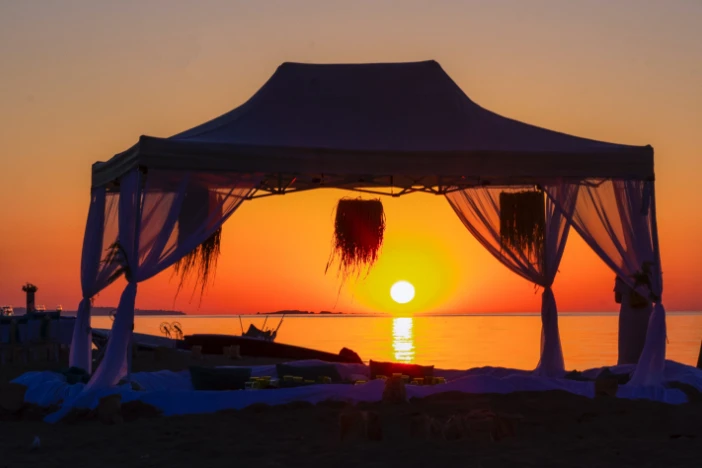
Materials
Generally, metal is used for the base legs or posts; steel is the preferred material since it’s strong, durable and affordable. For the roof, you’ll find sturdy materials such as PVC or acrylic fabric or some other type of shade cloth.
Purpose & Use
While people used canopies for religious reasons (more about this in the next section), they also had a domestic purpose in shielding doors and fireplaces. This made it possible to get your things together before leaving or upon arriving at the house, and you could use your fireplace, no matter if there were rain or harsh sunshine.
Today, we can still use them for these purposes and to have a cool place to be on a hot day. Jewish couples also hold their wedding ceremonies under a canopy called a “huppa.”
History
In ancient times, canopies signified that there were important people around, usually divine or royal. Experts think they came from the cosmic audience tents of kings in old Persia.
Later, in the Middle Ages, churches used them as symbols of divine presence. There were also wooden canopies that hung over tombs, statues and niches in the 14th and 15th centuries.
During the Renaissance, the religious canopy evolved into the baldachin. Then, Europeans started using them for non-religious purposes in the mid-16th century.
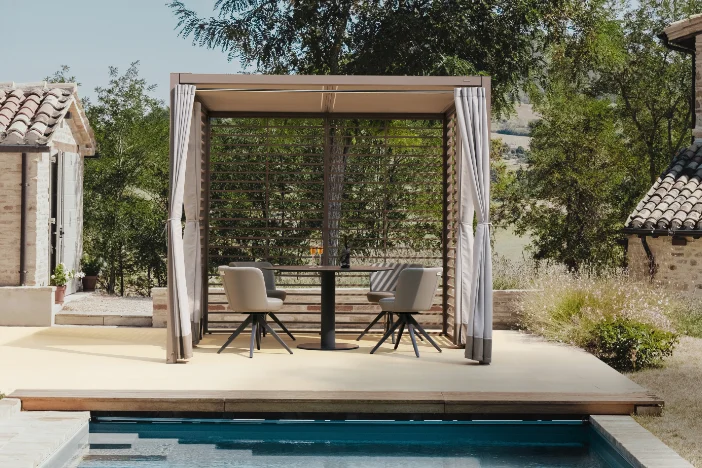
Placement
Many shade canopies are portable and lightweight, so you can set them up anywhere you wish in the backyard. As the sun shifts, you can move them accordingly with little issue.
If you have a fire pit or fireplace, then centering the canopy over it is a good idea. That way, you and your guests can stand around on a cold and rainy day.
Canopy Designs & Styles
These can be the simplest type of sunshade structures you can get or among the most elaborate.
On the minimalist side, canopies come in all sorts of shapes, sizes and colors. There are also various powder-coated metal frames from which to choose. Simple versions may have freestanding bases that allow you to move the shade around your outdoor area or break it down for storage in the off-season or between events.
Conversely, more contemporary canopies stretch synthetic fabric roofs across substantial square or rectangular metal or wooden frames that are permanently mounted to the surface. These large-scale shade structures blur the lines between them, pergolas and cabanas.
Modern Customizations
You can get custom images and words printed on the canopy tent fabric, which can make events more fun or reinforce corporate branding!
Otherwise, with some permanently mounted canopies, there’s a wide variety of customizations. For example, you can get a pergola-style version for something fancier. Or you can add curtains, a trellis, slatted walls or have it completely open.
Some canopies have adjustable slings too. This allows you to reposition them, which gives you more shade and privacy throughout the day. Other shade options include Roman shades or solar fabric roofs. These hybrid shades create stunning focal points and elevate the elegance of the outdoor space, but the luxury look comes at a hefty price tag.
Canopies – Pros & Cons
PROS
- Protection from sun & rain
- Can cover small or large outdoor areas
- Some versions are inexpensive
- Easy to install
- Portable versions
- Configurable models are ultra-chic
CONS
- Portable versions cannot withstand strong winds
- Some models may only provide overhead protection
- Fabric may need periodic replacement
- Pop-up versions are not elegant
- Modular systems can be very expensive
Shade with modern functionality to bucolic charm
Contemporary canopies are designed to accommodate a myriad of settings and personal preferences. Their dynamic walls, roofs and accessories create luxurious oases for enjoying the outdoors while being protected from it. Conversely, the last section of our guide touches upon largely aesthetic shade structures – arbors.

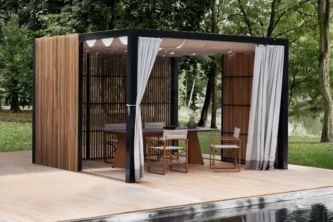
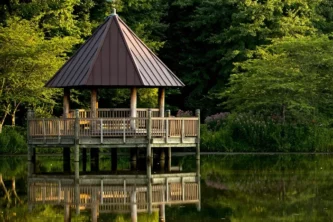
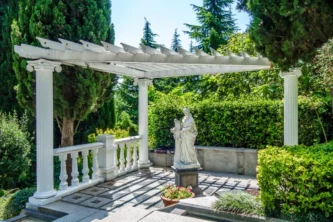
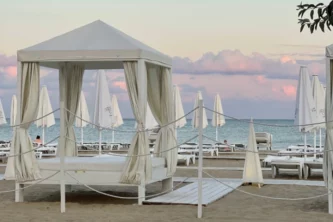
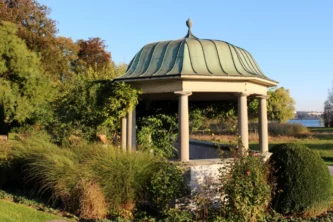
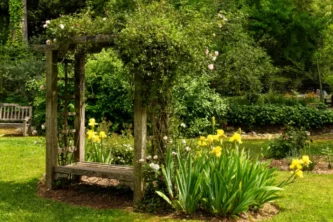




Leave a Reply